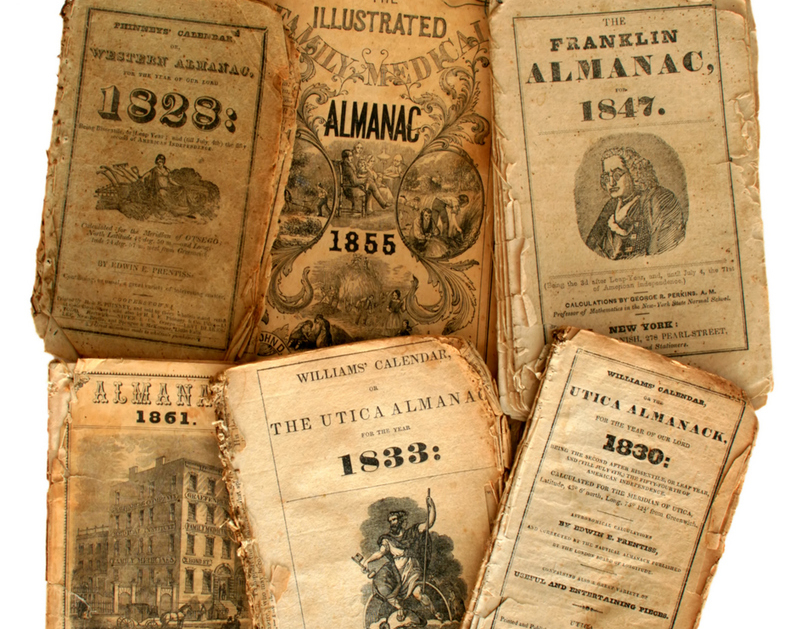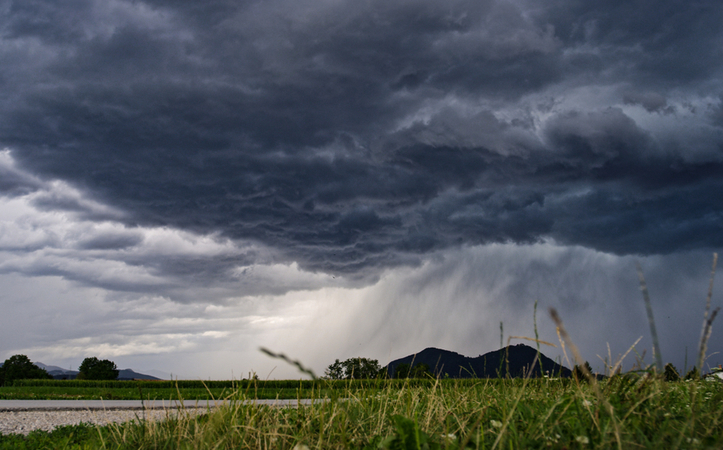For centuries, almanacs have served as valuable scientific documents that helped track the stars, the tides, planting seasons, and more. But how good are they at predicting the weather? Even today, almanacs — though less authoritative than they once were — retain a place in American life, especially rural life. Published annually, they typically offer a wide array of information about the coming year: timetables for the rising and setting of the sun and moon, for the tides and the constellations, and eclipses and meteor showers, along with dates of moveable holidays and feast days. But an almanac is more than a calendar. It’s a book for predicting the future — certain aspects of it, anyway.
Since ancient times, astronomers have tracked the stars and compiled charts to forecast their future movements. Cuneiform tablets dating to the fourth century BCE show that the Babylonians devised complex geometrical formulas to predict Jupiter’s position in the night sky. The earliest almanacs were collections of tables predicting the sun’s movements, moon, and observable planets among the fixed stars. The first to appear in Europe was compiled in 1088 CE at Toledo, Spain, under the great Islamic astronomer Abu al-Zarqali. The word “almanac” first appeared some two centuries later, in a treatise by the English philosopher Roger Bacon.

With the advent of the printing press, almanacs became highly popular across Europe. By the late 16th century, almanacs were outselling every English-language book but the Bible. Along with astronomical tables, they now offered a calendar of saints’ days, practical advice on farming and household management — such as favorable dates for planting certain crops or for breeding livestock — and foretold the weather, just as today’s almanacs do.
Almanacs appeared in America within a single generation of the first English settlements, with An Almanac Calculated for New England appearing in 1639. Publishers in Philadelphia later produced almanacs that were read all over the colonies. The most popular of these was Poor Richard’s Almanack, edited and written by Benjamin Franklin. Over its 25-year run, from 1732 to 1757, Poor Richard was a sensation, reinventing the almanac for American sensibilities. Franklin wrote to entertain and instruct; along with calendars, tables, and weather forecasts, each edition of Poor Richard contained mathematical puzzles, poetry, and news items that formed a running story, encouraging readers to buy the next year’s edition.

Its cultural impact was massive. Collections of witticisms drawn from its pages became bestsellers in their own right, and many of its sayings are still familiar to every American – Make haste slowly. Three may keep a secret if two of them are dead. Even “No pain, no gain” is a variation on one of Franklin’s sayings.
Today’s almanacs no longer indulge in prophecy, as a rule, except for one topic: the weather. Both the Old Farmer’s Almanac and the competing Farmer’s Almanac give a long-range forecast for conditions throughout the coming sixteen months. Many meteorologists are skeptical of these forecasts. Penn State climatologist Paul Knight noted that the publications’ use of vague language results in “predictions” so broad as to be virtually meaningless. Though both publications make extravagant claims — each declaring that its forecasts have an average accuracy of eighty percent or more. A 1981 study compared five years’ worth of Old Farmer’s Almanac predictions to the recorded conditions in cities across the almanac’s sixteen regions and found that the forecast was about fifty percent accurate — no better than random chance.